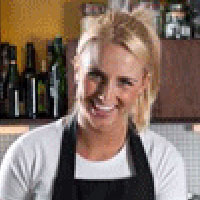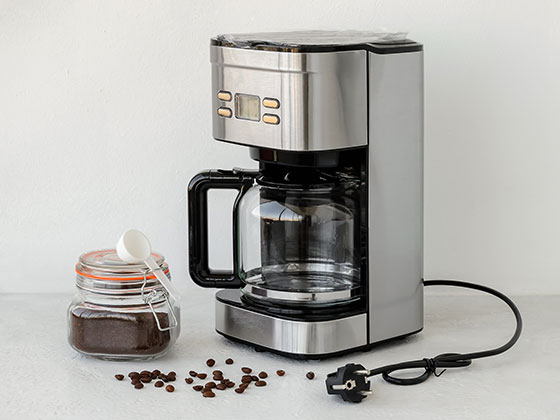French presses are not automatic. You have to manually use the plunger to strain the aromatic oils and strong flavor of the coffee. Whereas Drip Filter machines are totally automated.
There are obvious differences between a drip filter and French press-style coffee. But the fact that the French Press offers more freedom regarding how you can make your coffee generally outweighs anything else for the coffee connoisseur.
By the way, this article contains Amazon affiliate links. This means that I receive a small commission, (at no extra cost to you), if you make a purchase through links provided. Thank you for supporting our coffeebrewinghub.
You’re in control with a French Press
The most important factors of making coffee are
- steep time
- water temperature
- the quality of the coffee grounds
- the total ratios between coffee grounds, water and brew time
When you use a French press machine, you have the power to control and alter all these factors and come up with your unique ‘recipe’ for coffee, which is repeatable.
Change the amount of pressure you exert on the plunger as per your taste.
If you want a stronger taste, leave the coffee steeping for a while and then give it a good strain.
For a mild, yet solid taste, leave it to steep for 10 minutes and gently strain the coffee beans to extract all the oils and richness from the coffee grinds.
Drip Filter Coffee makers do the work
Drip brew machines are typically, automated machines that you often see in a workplace. I used one in my office for years and the big benefit was that the coffee pot sat on a heating element keeping the coffee warm for top ups and visitors.
In recent years the humble drip filter coffee maker has undertaken dramatic changes in terms of availability of products with sophisticated functionality.
Function varies enormously. So does the price.
The main changes to some products have been the inclusion of permanent filter baskets that can be detached for easy cleaning. These are a good choice if you prefer not to use filter papers.
The basic drip filter coffee maker that’s been around for many years with a proven record is still available under $50. Black and Decker’s programmable coffee maker is a good example of no-frills (but you really still do get some frills) for a cheap price.
You can pay up to $600, or more, for the sophisticated function of the top-quality Wolf for example.
Some models include a conical burr grinder, auto start, and paperless filters. The choice depends on how automated you want to make the process. Hamilton Beach drip filter includes an automatic shut-off after 2 hours. A handy feature if you don’t want to worry about leaving an appliance on when you head out.
Then there are the statement options. Those appliances that demand attention like the 50’s inspired Smeg drip filter coffee maker in a range of beautiful colors. A stylist’s dream.
Convenience makes Drip filter coffee makers very popular kitchen appliances.
They are worth their weight in gold when serving coffee to guests at the end of a dinner party. You know the feeling, when you’re hosting a dinner party and by the end of the evening you’re tired and just want to relax, sit with your guests and enjoy a coffee. Voila, the coffee pot is sitting there ready.
Some brands, like Smeg, have an automatic brewing function. Add the water and coffee, pre-set the time you want coffee ready and the alert will remind you to serve it. How good is that?
What to look for in a Drip Coffee Maker
Size: 12 cup capacity is common; they are available between 10 to 14 cups
Carafe – is available in glass and thermal stainless steel

How does a drip filter work?
Grid coffee beans to a medium-course grind.
Insert the filter paper into filter holder. Add as many spoonfuls of coffee grinds to the filter for the number of cups of coffee you’ll be serving.
As a guide: 7 grams to 100-150 mls water. 1 teaspoon of ground coffee = 2.66 grams.
Add filtered water to the tank and switch on.
Note: Filtered water should be used in all coffee machines. Minerals from unfiltered water affect taste. Water should look clear and be odorless.
The water heats in the tank and when it reaches the prescribed temperature, (90° to 95°), is fed through the machine.
Water starts ‘dripping’ into the coffee in the filter. Oils released from the coffee are left behind in the filter and coffee flows through to the serving pot below.
The glass coffee pots sits on a warming pad to keep the coffee hot until you need it. Serve as many cups as needed, return the pot to the heating element to keep warm for top ups. Everything is brewed, kept hot and ready to go.
Difference between Reusable filters and Paper filters
Many drip filter machines now have reusable coffee filters.
In the long term reusable saves you money as having to buy paper filters is an ongoing expense. And of course there’s the environmental factor.
But more than that, using Reusable filters results in a more flavorful brew. More of the natural oils reach your cup which results in a richer cup of coffee instead of being thrown away in the filter paper.
Using paper filters
This means less sediment reaches the bottom of your coffee cup, and fewer natural oils reach the cup producing a slightly weaker coffee.
For many, the taste difference between using a paper filter and a reusable filter will be only very slight or not evident at all, in which case it really is personal preference whether you like full-flavored brew or a more delicate flavor.
Note: A better, tastier brew will always come from using a clean filter and coffee maker no matter which filter type you choose. Remember to clean filter and coffee maker after every use.
Overbrewed coffee
The convenience of having a brew sitting on a warmer is often traded for over-brewed coffee that becomes more bitter when the pot is left to sit for too long on the warming plate. The ideal brew is ready in 5 minutes so you can see why this becomes a problem.
This is an issue for most drip filter coffee makers because the coffee keeps brewing on the warming plate.
There is a manufacturer that has addressed this issue. The Wolf gourmet automatic drip coffee maker does not have this issue.
A design feature is the thermal carafe which keeps coffee hot and at the perfect temperature, instead of using a ‘keep warm’ plate. Optimal coffee drinking temperature is maintained for 2 hours and coffee tastes as fresh as when it is first brewed.
Summary
- The French Press is convenient, portable and cheap. And a device that enables you to prepare a truly personalized cup of coffee.
- The Drip Filter coffee maker is easy to use and automated and fast.
French Press Pros and Cons
- Easy to tailor the brew to how you like your coffee
- French press method is the ultimate form of coffee making
- Inexpensive
- Not automated
- It takes a little more time to prepare your morning coffee.
Drip Filter Pros and Cons
- Automated
- Drip filter machines are famous for the quick coffee making
- Drip filter brews are a good choice for people who just want their daily fix of caffeine and nothing else
- 'Keep warm' hot plate function can keep cooking the coffee - see 'Wolf' drip filter to avoid this
- Not up to the French Press for taste and quality
- If left to sit for too long, coffee can become bitter
- Price varies considerably from under $35 to $600 or more for sophisticated models




